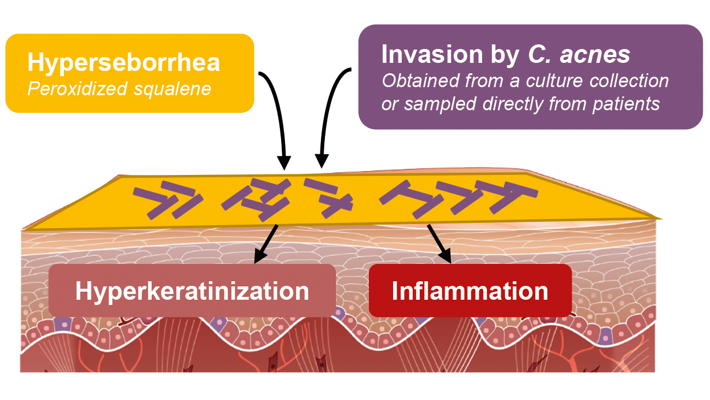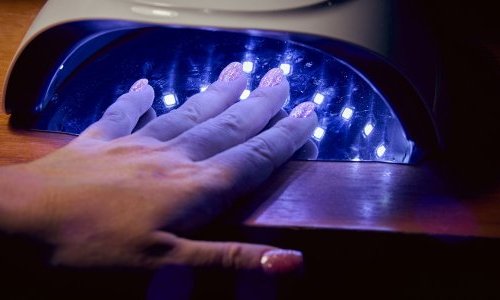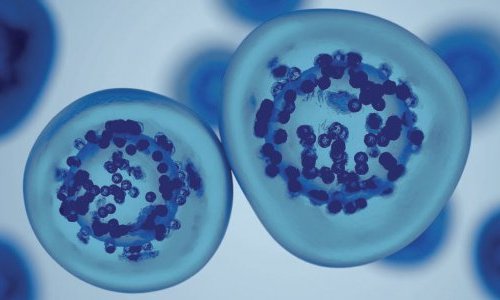Most 3D models mimicking acneic skin do not take into account all of the four main components of this skin inflammation: hyper-seborrhea combined with a modification of the composition of sebum, colonization by Cutibacterium (C.) acnes, in particular the virulent phylotype IA1, hyperkeratinization and a secreted inflammation.
Multifactorial model
“Most 3D models mimicking acneic skin independently use hyperseborrhea or invasion by C. acnes to induce the characteristics of acneic skin,” said Silab. However, as these two factors are inter-related at the early stages of the pathology, the French manufacturer of cosmetic active ingredients sought to develop a 3D model combining sebum alteration and invasion by C. acnes.
For that purpose, a reconstructed epidermis was treated simultaneously with peroxidized squalene and C. acnes phylotype IA1 obtained from culture collection or isolated directly from acneic patients. The combination of these two factors induces acne-like keratinocyte responses, such as hyperkeratinization and inflammation, thereby providing a model exhibiting all the characteristics of acneic skin.
“The detailed characterization of this new in vitro model proves that it is totally suitable to mimic acneic skin and to be used as a screening tool for the development of acne treatments,” explained by Marine Laclaverie, in vitro Innovation Project Leader at Silab.

Once validated, this model was further improved by using different phylotypes of C. acnes strains specifically isolated from healthy and acneic patients.
A naturally-derived active ingredient
The 3D model resulting from this work has enabled the company to demonstrate the pharmacological activities of Acnesium, a natural active ingredient developed by Silab Softcare to treat the clinical signs of slight to moderate acne in adults.
Produced from the pericarps of pomegranates (Punica granatum) from the orchards of the Tunisian Gabès oasis, Acnesium restores the homeostasis of acneic skin by targeting its four major components: it restores the homeostasis of acneic skin, it helps the activity of the sebaceous gland to return to normal, it controls colonization by C. acnes phylotype IA1, it has a keratolytic action and reduces inflammation by limiting keratinocyte sebocyte and lymphocyte inflammatory responses.
The clinical efficacy of Acnesium was also demonstrated under control by dermatologists in a cohort of adult Caucasian patients suffering from slight to moderate acne.
“Combining rapidity of action and efficacy, this high-tolerance care product improves the general aspect of the skin and thereby patients quality of life,” concluded Silab.





























